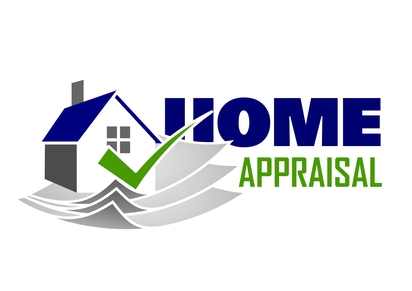One way to make money in residential real estate: Buy the worst house in the best neighborhood you can afford — and then fix it up.
HomeVestors, which buys beat-up homes and resells them, is trying to find the ugliest of them all in its annual contest, which ends later this month.
Many of this year’s Ugliest Home candidates don’t look too unsightly from the outside, but a quick peek behind closed doors reveals some truly horrible conditions.
Buyers shouldn’t be too deterred by the chewed-up kitchen cabinets or flood-damaged floors, however. Buying a beat-up property can be a lot cheaper than buying one in A-one condition — as long as the damage isn’t too extensive.
Of course, it’s prudent to get an accurate estimate of what repair and renovations will cost before taking the plunge. The cost of fixing a cracked foundation or bad plumbing can wipe out any benefit of buying the fixer-upper on the block.
Here are five candidates in the running for HomeVestors’ Ugliest Home in America contest. Almost all of these homes have been bought by HomeVestors franchisees or clients and renovated. There truly is life after ugliness.
Chicago, IL
Status: Renovated
Ugly price: $45,000
Restored price: $162,000
 |
After filling 3 huge dumpsters this Chicago home cleaned up nicely.
Photo: HomeVestors |
The Chicago area is a moderately-priced market but when a two-bedroom, two-bath townhouse is in as bad condition as this one was, the value can plummet.
Despite the separate dining room, the balcony off the master bedroom and the nice yard, this home sold for a mere $45,000.
Why so cheap? The interior was a disaster. Junk was piled shoulder high in some spaces. It took three, 40-foot-long dumpsters to get rid of it — and that did not include construction debris, reports the buyer, Alan Washer, a HomeVestors franchisee.
Washer completely rehabbed the house and replaced the wiring and heating systems. He put in all new interior doors and hardware, hardwood floors, bath tile and fixtures, windows and molding. All told, it took six months to complete the job.
Even after deducting for expenses, the deal was profitable: Washer sold the home for $162,000.
Frisco, TX
Status: Refreshed
Ugly price: Not applicable
Restored price: Not applicable
 |
The renter in this Frisco, TX home left behind a huge mess but the outside looks good.
Photo: HomeVestors |
The owner of this vintage house north of Dallas, Robert Pittana, nominated it for the Ugly Home contest himself because, he said, “I had never seen a house that ugly before.”
Really though, the place has all the attractive exterior accouterments of a home buyer’s dream: an arched entryway and windows, solid brickwork and a fan-light over the front door. Inside, though, it was another matter.
Pittana had rented the house to someone who “went off the deep end,” he said. Neighbors informed Pittana that they saw five or six cats trying to get out of the house. When he entered, he couldn’t stay long: There were cat feces everywhere, even on the ceiling.
The fix included stripping out the carpets and floors, bleaching walls and repainting. He brought in an ozone machine for several days to drive out the stink. Pittana still owns his ugly home, but it’s a lot easier on the eyes and nose now.
Englewood, CO
Status: Renovated
Ugly price: $76,000
Restored price: $110,000
 |
This Englewood, CO abode just needed a good clean-up.
Photo: HomeVestors |
The ugly duckling on a block of well-kept homes, this was a sad little two-bed, two-bath ranch house that sold for less than half as much as other similar homes in the neighborhood.
The home’s biggest problem was its owner, a hoarder. Floors, cabinet tops and other surfaces were piled with junk, much of it soiled and worthless.
Once the buyers got rid of the junk, exterminated all the pests and eradicated the molds, the home only needed some cosmetic repairs and replacements, which were done in just a few weeks.
The house was resold for $110,000, up from the $76,000 paid for it in this condition and retook its rightful place among the other tidy homes in the community.
Teaneck, N.J.
Status: Renovated
Ugly price: $180,000
Restored price: $330,000
 |
Roof leaks took a heavy toll on this Teaneck, N.J. home – but now it’s better.
Photo: HomeVestors |
From the street, this bank-owned property looked pretty good: a modest wood-framed colonial with a small yard and a two-car garage. Inside was another story.
The roof had leaked for years and rainwater had rotted out many of the home’s structural elements — all the way to the basement. The plaster ceilings and walls were un-salvageable and ugly thick mold was growing all over the damp spots in the house.
The buyers had to completely restore the home with new floors, sheet rock, paint and woodwork. The baths were done with tile and the kitchen with granite counters, cherry wood cabinets and stainless steel appliances.
Teaneck, N.J., where this home is located, is a short hop to Manhattan and home prices are relatively high, averaging about $350,000, according to real estate website Zillow. The buyers only paid $180,000 for this home. After they renovated the place, they sold it for about $330,000.
Shirley, MA
Status: Renovated
Ugly price: $41,915
Restored price: $174,500
 |
An ugly duckling home can become a swan.
Photo: HomeVestors |
This was a handsome old house, one of the nicest in town, with a rocking-chair front porch and roomy interiors. But then the former owner lost his job, according to the local HomeVestor franchisee, Michael Jordan, and “The mounting bills and upkeep on the home became too much.”
Jordan and his brother, a contractor, bought the home for less than $50,000 and embarked on a total renovation. One of the biggest problems was the amount of debris. Jordan filled dumpsters with junk, including two pianos and several arcade games.
The home needed a lot: a new roof, heating system and the floors were a wreck. All the windows had to go. The Jordans also added a bathroom and put in a new kitchen. The rehab cost about $90,000.
They resold it at a small profit. But almost as important, said Jordan, is getting rid of an eyesore for the neighborhood.
Originally posted on money.cnn.com









